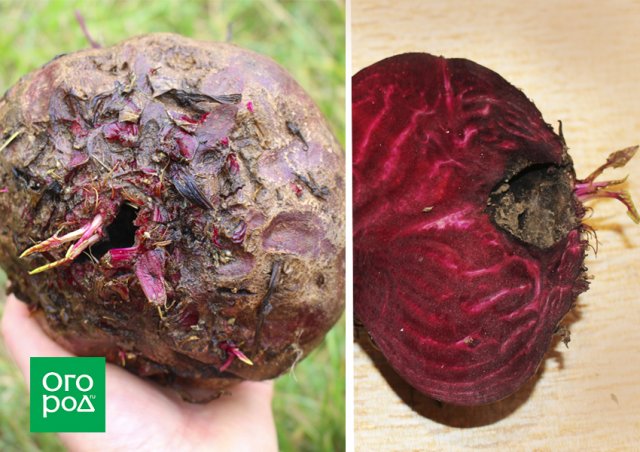Many gardeners face the problem of cracking root crops, in particular beets. The taste of damaged beets decreases. In addition, such vegetables are poorly stored, although the cracks heal over time.
Sometimes even small cracks at the base of the petioles lead to the root crop spoiling, because water gets into the resulting cavity from above. Sometimes damaged beets rot right on the bed, because damaged tissues are often populated by soil microorganisms.
Let’s figure out what are the main reasons for root crop cracking.
Irregular watering
Beets usually crack when a dry period alternates with excessive watering. The soil in the bed where beets grow should always be moderately moist. With a lack of water, the development of the root crop slows down. The cells of the surface tissues become thick-walled and lose elasticity. And after abundant watering, the root crop begins to grow quickly and the upper tissues crack.
Excess nitrogen fertilizers
A large amount of nitrogen in the soil causes tissues to grow too quickly and become loose. Therefore, beetroot should be fertilized with nitrogen fertilizers only at the very beginning of the growing season, and then reduced to a minimum. Organic matter (rotted manure and compost) is added in the fall when digging up the soil. And if you added fresh manure to the bed in the fall, at least two years should pass before sowing beets.
How to prevent cracks and other defects on beets
To prevent beets from cracking, you can follow a few simple but important rules. Let’s list them.
1. Prepare the soil properly. Beets will not fully develop in acidic soil. However, you should not lime the soil immediately before sowing: this can lead to the appearance of scab. You need to think about deoxidizing the soil in advance, in the fall. If you have not done this, then before sowing beets and throughout the growing season, you can add wood ash or crushed eggshells.
When preparing the soil for sowing beets, add moderate doses of complex fertilizers, which should contain boron and manganese. In addition, beets have an increased need for sodium. This chemical element is the main component of regular table salt. To replenish the sodium content in the soil, water the beets with a solution of table salt several times during the season. As a result, the sugar content and yield of the vegetable will increase, and the root crops will acquire a darker color.
The presence of red veins on beet tops and reddening of leaves indicates a lack of sodium.
To determine how much salt to add to the water, examine the leaves. If they look healthy, it is enough to dissolve 1 tbsp. of salt in a bucket of water. If the veins have started to turn red, increase the amount of salt to 2 tbsp. per 10 liters of water. All beet fertilizing is stopped 2 months before harvesting.
2. Water the beds regularly and loosen the soil.. Loosening allows you to break the crust that forms when the soil dries out, and also prevents the formation of soil capillaries through which moisture rises to the surface of the earth. Loosening is sometimes called “dry watering”. Loosened soil conducts water and air well to the roots.
Beets are watered between the rows as the soil dries out. In the fall, 10-15 days before harvesting, watering is stopped.
3. Mulch the beds. Mulching to some extent replaces loosening and perfectly protects the soil from drying out. This is especially important if you can only tend to the beds on weekends.
4. Don’t delay harvesting beets. Harvest beets in dry weather before prolonged rains. Excessive moisture at the end of the growing season causes large root crops to crack and rot. Early ripening beets can be stored as early as the first half of September. Do not forget that beets are afraid of frost. This is especially true for varieties with elongated root crops that protrude above the ground.
5. Choose beet varieties and hybrids that are resistant to cracking and drought. It Cylindra, Pablo F1, Bordeaux, Action F1, Mona, Podzimnyaya A-474.
The quality and quantity of the harvested root crops depends on how well the care of the plantings was organized.












